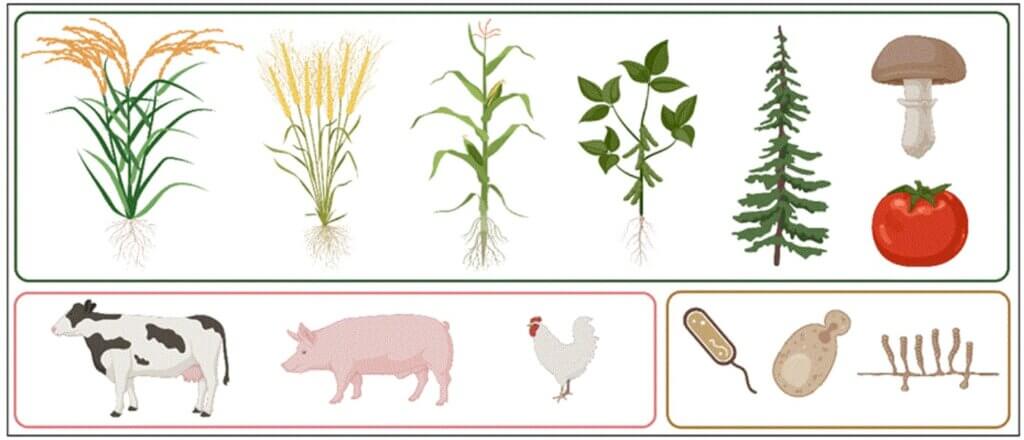The ability to engineer genomes and tinker with DNA sequences with unprecedented ease, speed, and scale is inspiring breeders of all biological entities. Genome engineers have deployed CRISPR tools in species from viruses and bacteria to plants and trees (whose genome can be 10 times larger than the human genome), including species used in food and agriculture (Zhu et al. 2020).
Starting small, bacteria used in food fermentations have had their genomes enhanced to optimize their functional attributes linked to the flavor and texture of fermented dairy products such as yogurt and cheese. The fact that CRISPR-Cas systems provide adaptive immunity against viruses in dairy bacteria led to the commercial launch, more than a decade ago, of bacterial starter cultures with enhanced phage immunity in industrial settings. Most fermented dairy products are now manufactured using CRISPR-enhanced starter cultures. Since then, a variety of bacteria, yeast, and fungi (figure 2) involved in the manufacturing of bioproducts has also been CRISPR enhanced to yield commercial products such as enzymes, detergents, and dietary supplements.
Moving along the farm-to-fork spectrum, most commercial crops—from corn, soy, wheat, and rice to fruits and vegetables—have had their genomes altered (figure 2). Genome engineering is used to increase yield (e.g., meristem size, grain weight) and improve quality (e.g., starch and gluten content), pest resistance (e.g., to bacteria, fungi, viruses), and environmental resilience (e.g., to drought, heat, frost). For instance, nonbrowning mushrooms with extended shelf life can be generated, and tomatoes with increased amounts of gamma aminobutyric acid (GABA) to enhance brain health have been commercialized. In addition, efforts are underway to enhance nutritional value.

Livestock breeders have joined the fray, with genome engineering of main farm species such as swine (leaner bacon), poultry (CRISPR chicken), and cattle (for both meat and dairy). Swine have also been edited with a viral receptor knockout to prevent porcine reproductive and respiratory syndrome; the approach is being evaluated for regulatory approval (Burkard et al. 2017). Breeding applications include hornless cows (for more humane treatment), resistance to infectious disease (tuberculosis in cattle), and removal of viral sequences in the genome of elite commercial livestock,[1] notably swine. The CRISPR zoo also encompasses genetically diverse species—fish (tiger-puffer and red sea bream), cats (efforts are underway to develop hypoallergenic variants), and even butterflies (wing pattern)—illustrating the ability to deploy this technology broadly.































